Locally Grown
As part of Temporary Home Residency (2023)
Milan Design Week 
Sanne Visser and Milanese hairdressers at Temporary Home Exhibition during Milan Design Week 2023
Photocredits: BASE
During the Milan Design Week 2023, the third edition ‘We Will Design: We have an I.D.E.A’ presented at BASE Milano invites designers from all over the world, schools, universities, international institutions, young students reflecting on the concept of plural and inclusive design.
Sanne Visser, alongside four other designers, were in residence as part of the Temporary Home programme at BASE, where casa BASE serves as a home and place for experimentation enabling the residents to develop, display and present their own projects to the public.
LOCALLY GROWN at BASE
Designer and researcher Sanne Visser — collaborating with British Council, as part of the Circular Cultures programme— presented LOCALLY GROWN, a design
research project exploring human hair as a material resource, by working closely
with hairdressers to rethink and reimagine the system of hair recycling. Through an interactive installation, it invited visitors to see and physically experience the
opportunities human hair can bring to wider ecosystems, from live haircuts in a
redesigned barber’s chair to co-design workshops envisioning new equitable futures
using radical materials.



Visitors experiencing a free haircut, and understanding and questioning the idea of the near future of hair farming Photocredits: BASE
Sanne worked with local hairstylists in Milan providing (free)
haircuts to visitors, experiencing the idea of hair recycling in the
redesigned tools, questioning ‘what if our hairdressers become the
farmers of the future’. In one week more than a hundred haircuts
took place in collaboration with local hairstylists in Milan from hair
salons and academies including Orea Malia, Diadema Academy
and Glow Hair & Beyond. The collected hair will be used as part of
Sanne’s practice creating new regenerative materials and products -
from dog leads to swings, to belts and bags.
Alongside live haircuts at the centre of the exhibition, Sanne presented the WALL OF HAIR on one side and the journey of materiality using hair in the ‘FROM FIBRE TO RESOURCE’ section on the other side, showcasing pre-existing and new material developments. See below for more information.
Alongside live haircuts at the centre of the exhibition, Sanne presented the WALL OF HAIR on one side and the journey of materiality using hair in the ‘FROM FIBRE TO RESOURCE’ section on the other side, showcasing pre-existing and new material developments. See below for more information.

Interactive design elements in the exhibition, asking visitors about their thoughts on hair
Photocredits: BASE
FROM FIBRE TO RESOURCE
Since 2016, Sanne’s practice has focused on the development of yarn
and rope from human hair, using traditional techniques including
spinning and ropemaking amongst other methods. For Milan
Design Week 2023 Sanne launched newly developed materials and
formed collaborations, stretching the boundaries between crafts
and science. Woven hair samples were developed in collaboration
with Chilean textile artist and designer Sofía Hott, alongside
bioplastics using the keratin of hair.
Since 2016, Sanne’s practice has focused on the development of yarn
and rope from human hair, using traditional techniques including
spinning and ropemaking amongst other methods. For Milan
Design Week 2023 Sanne launched newly developed materials and
formed collaborations, stretching the boundaries between crafts
and science. Woven hair samples were developed in collaboration
with Chilean textile artist and designer Sofía Hott, alongside
bioplastics using the keratin of hair.
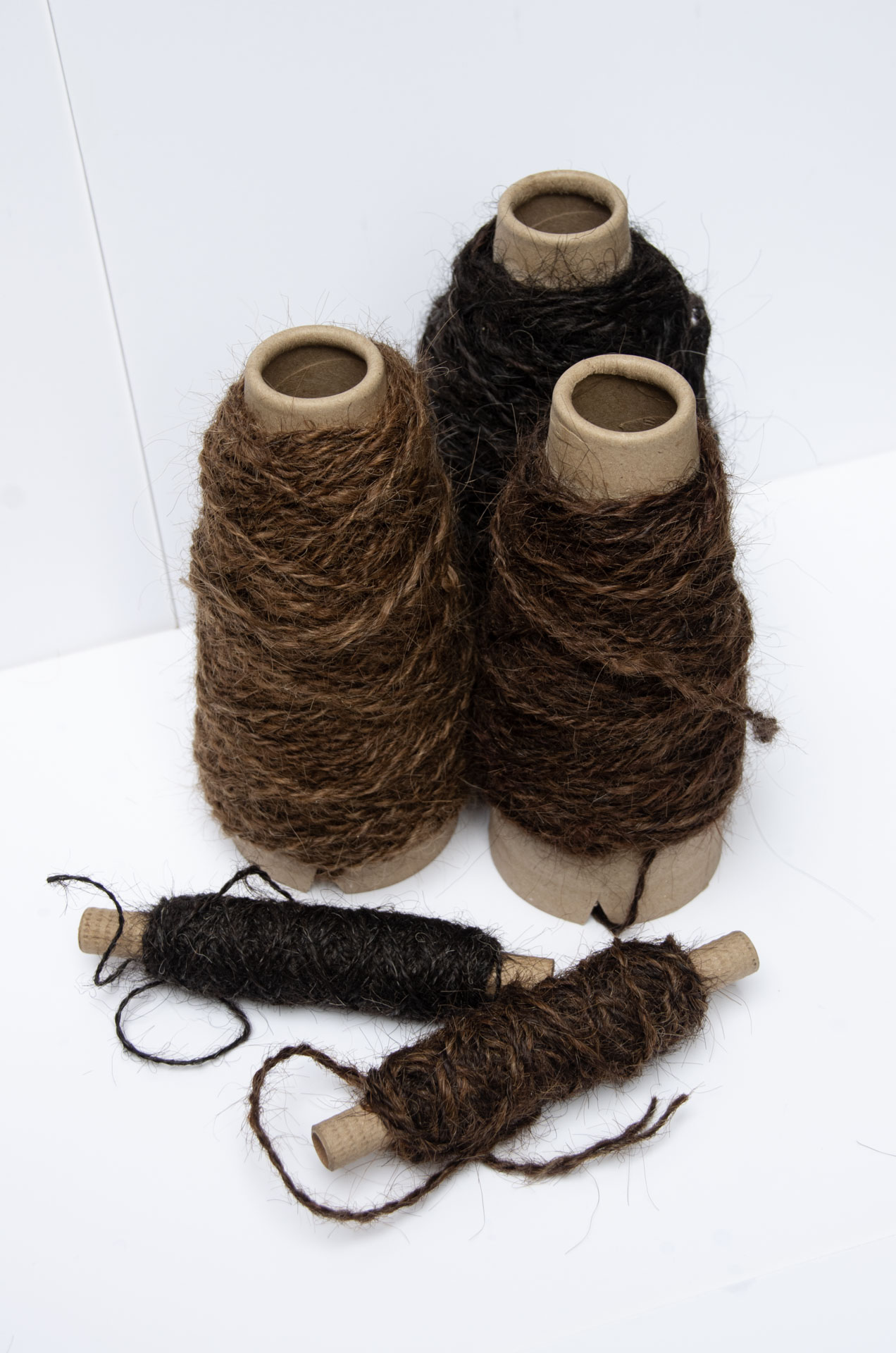
Handspun yarn from 100% human hair collected from local hairdressers and
babershops in London by Sanne Visser
(2016-ongoing)

WOVEN HAIR - STUDIO SANNE VISSER X SOFÍA HOTT
‘For pre-Columbian Andean cultures, the use of human hair in textiles
and funerary practices was an activity strongly related to sacred
practices and the cycle of life. These woven samples are inspired on these
ancient practices, making an invitation to reflect about the language and
use of a sacred material today’ – Sofía Hott
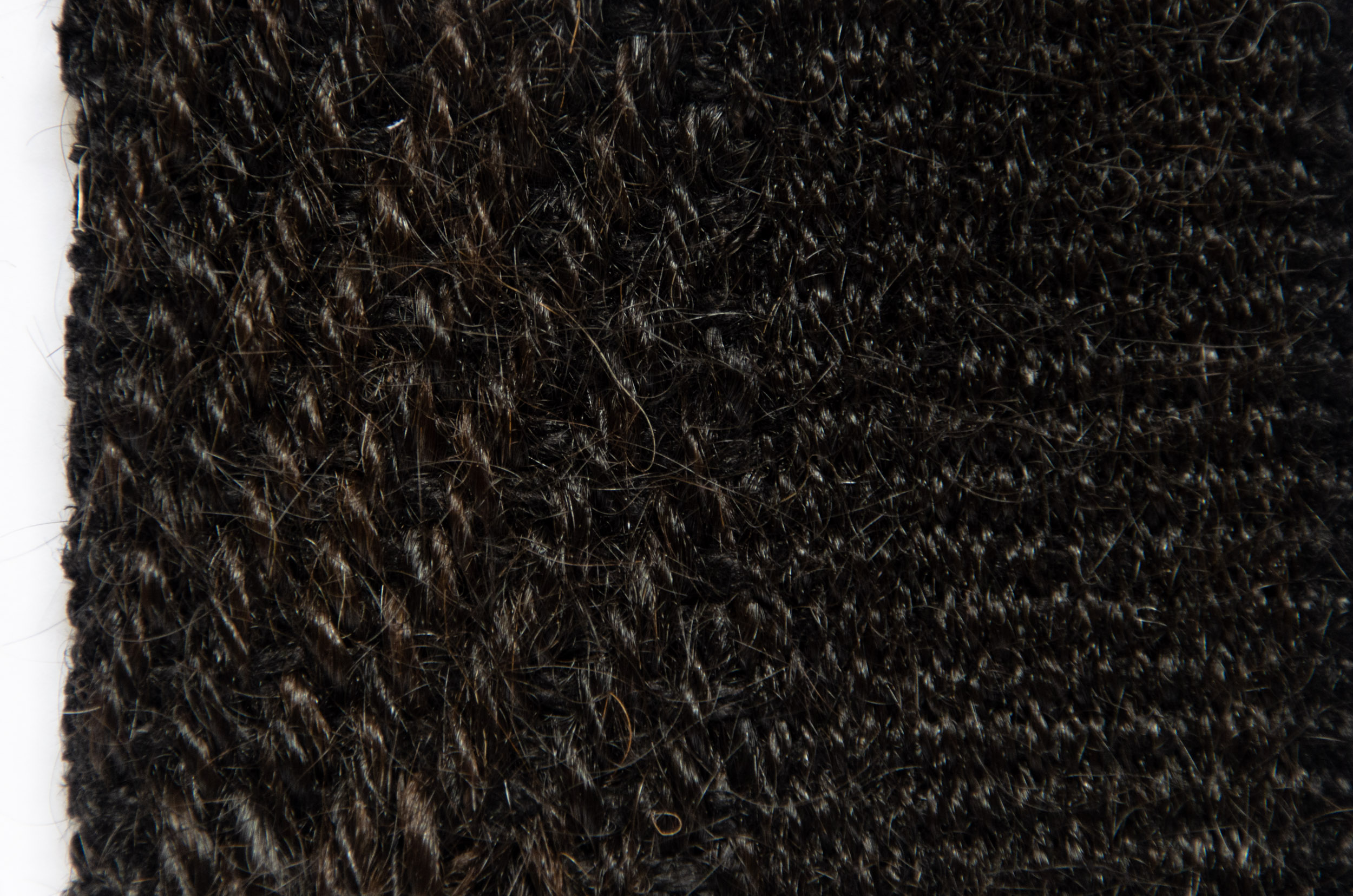

Sample Nº1. Awki Amawta / from the Quechua language “The wise ancient”
Sample Nº2. Allqa Awana / from the Quechua language “Black and white weaving”
Sample Nº3. Yana Willka / from the Quechua language “Sacred black”
Sample Nº4. P´aqui Pacha / from the Quechua language “Blonde earth”
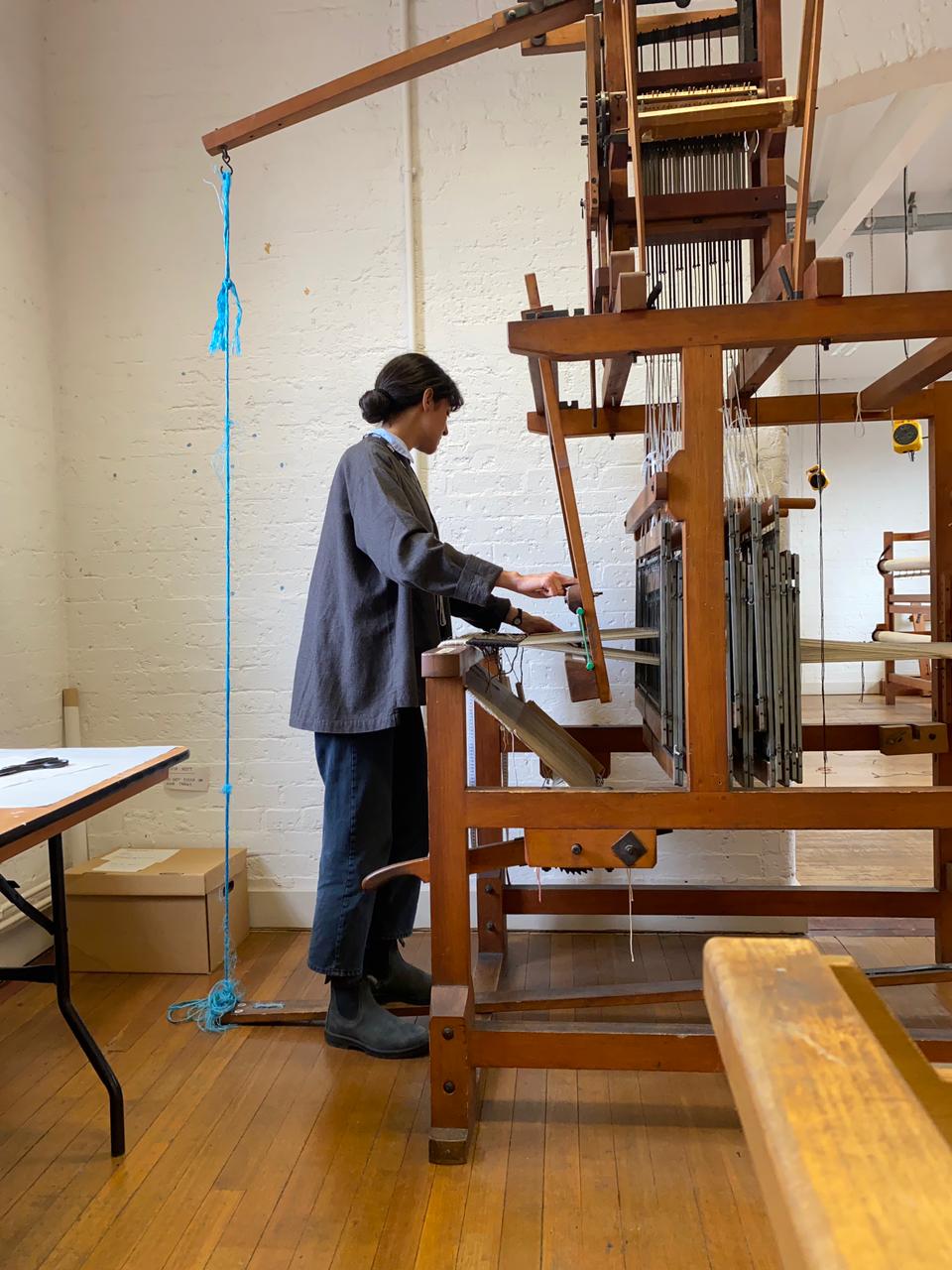
Weaving process by Sofía Hott, 2022
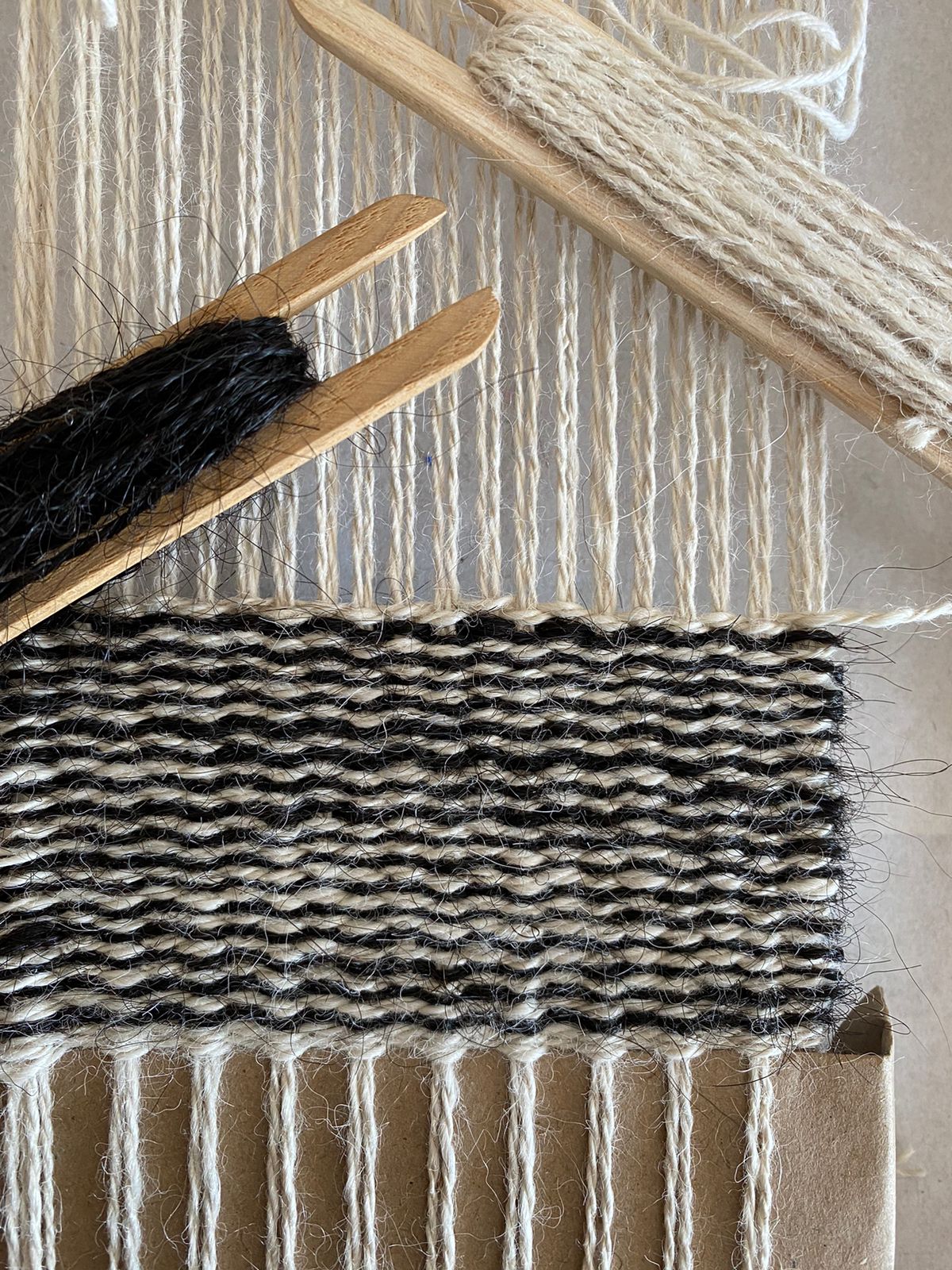
Biography Sofía Hott
Sofía has a background in cultural heritage, researching rural textile traditions, and working with artisan communities in South America. Her inspiration as a weaver comes from her Andean roots and the pre-Columbian cultures, creating woven pieces that help to reconnect to the ancestral past and to revalue the ancient sacred traditions. Sofía holds an MA in Textile Design from the University of the Arts London (UAL) and is currently living in Santiago, Chile.
@sofiahott
BIOPLASTICS
Other newly developed materials showcased during the Design Week included a selection of bioplastics made from human hair. These new biomaterials made from human hair and its main polymer that is keratin, highlight the interesting, multi-faceted properties of hair – it being shiny, strong and yet lightweight. Sanne is interested to better understand how to create high value of low valued materials – in this case the focus on extra short hair fibres.
Other newly developed materials showcased during the Design Week included a selection of bioplastics made from human hair. These new biomaterials made from human hair and its main polymer that is keratin, highlight the interesting, multi-faceted properties of hair – it being shiny, strong and yet lightweight. Sanne is interested to better understand how to create high value of low valued materials – in this case the focus on extra short hair fibres.
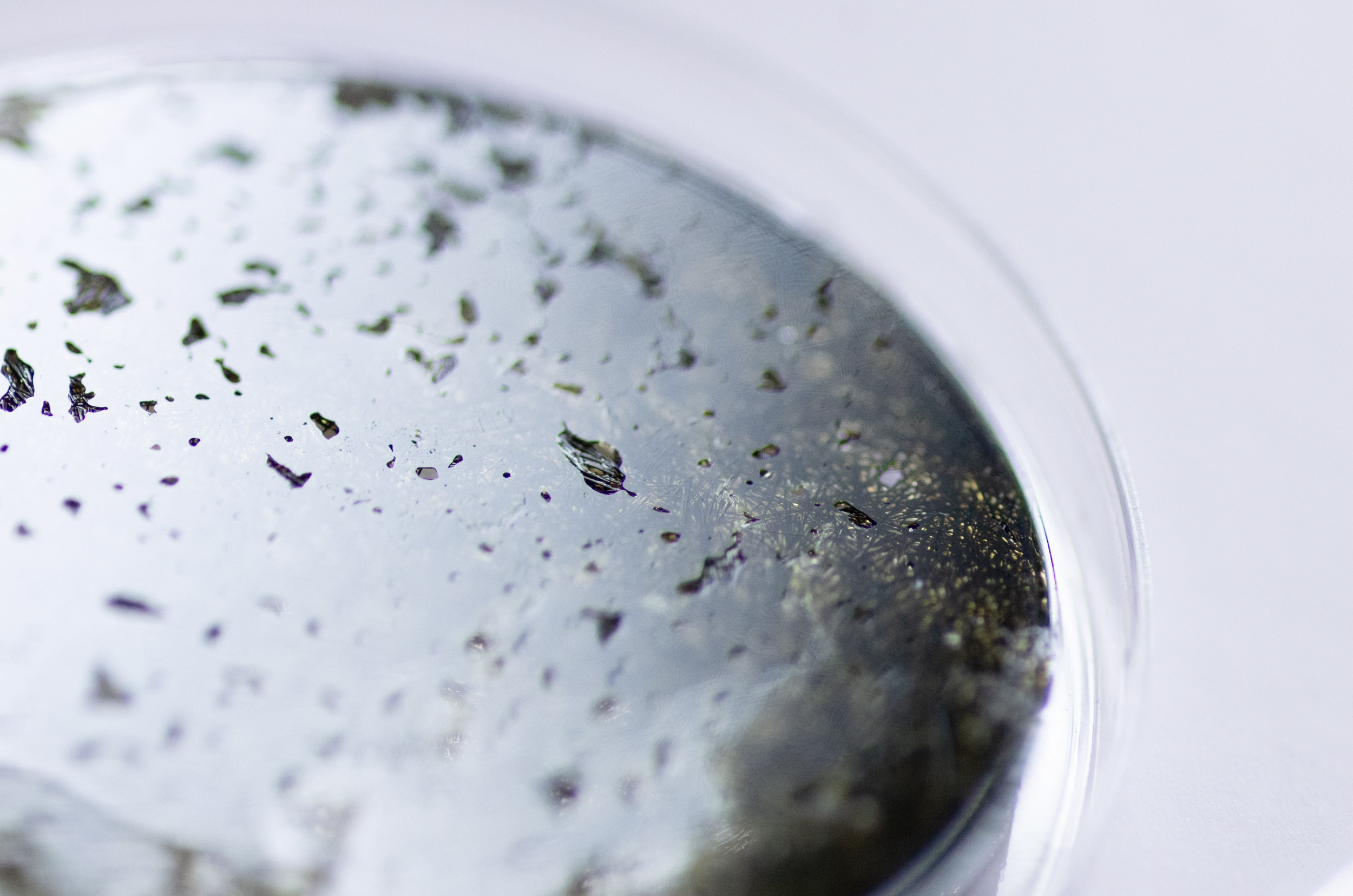
Newly developed biomaterials using the extracted keratin from hair to create a plastic like material by Sanne Vissser, 2022

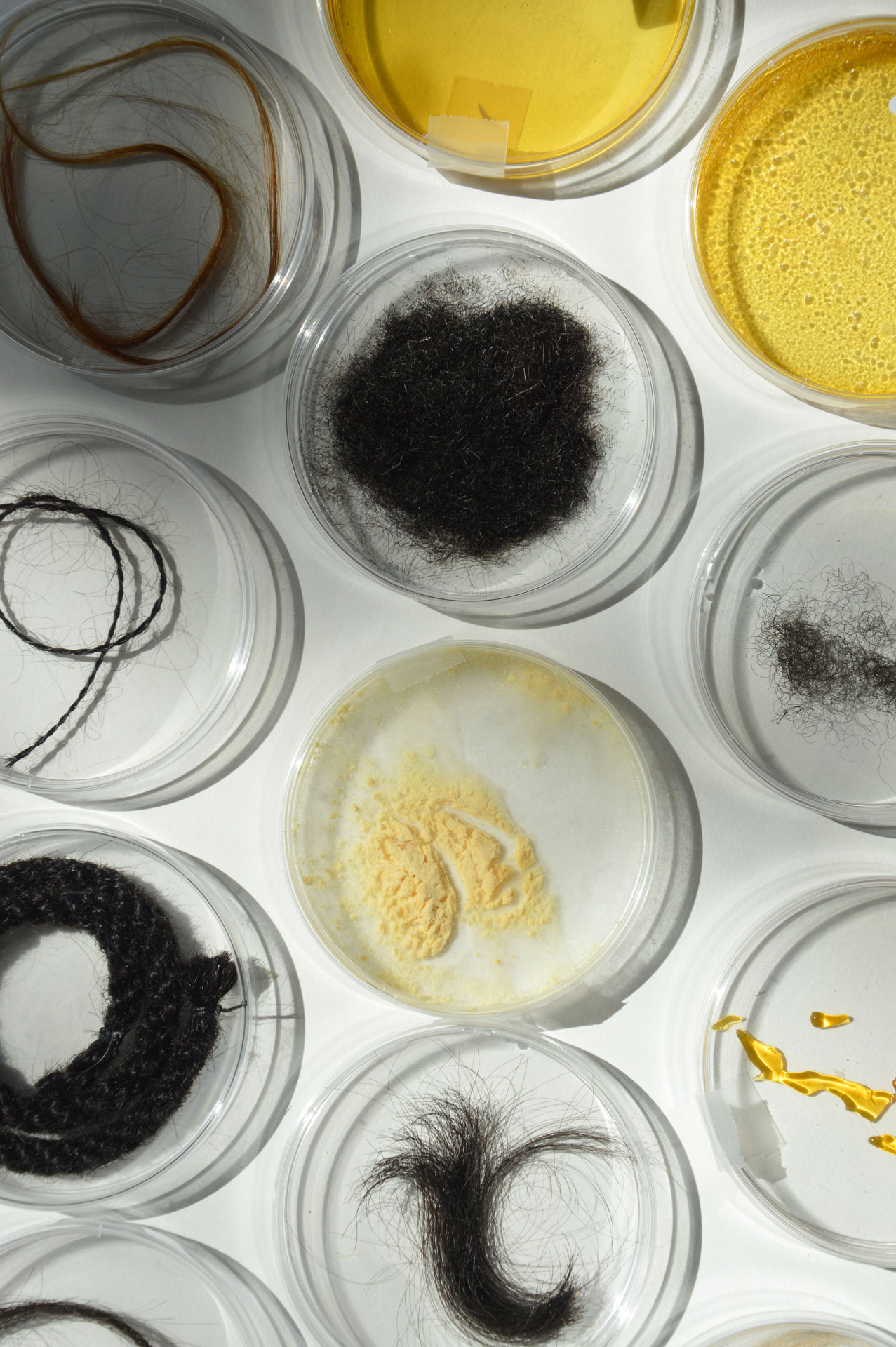
WALL OF HAIR
The WALL OF HAIR aimed to welcome and celebrate the diversity of all hair during the Milan Design Week, by inviting people to think how they like their hair to be used in the near future and what the main purpose would be leading to equitable futures. Visitors were able to cut a strand of their hair and place it on the wall by adding their perspective of hair as material.
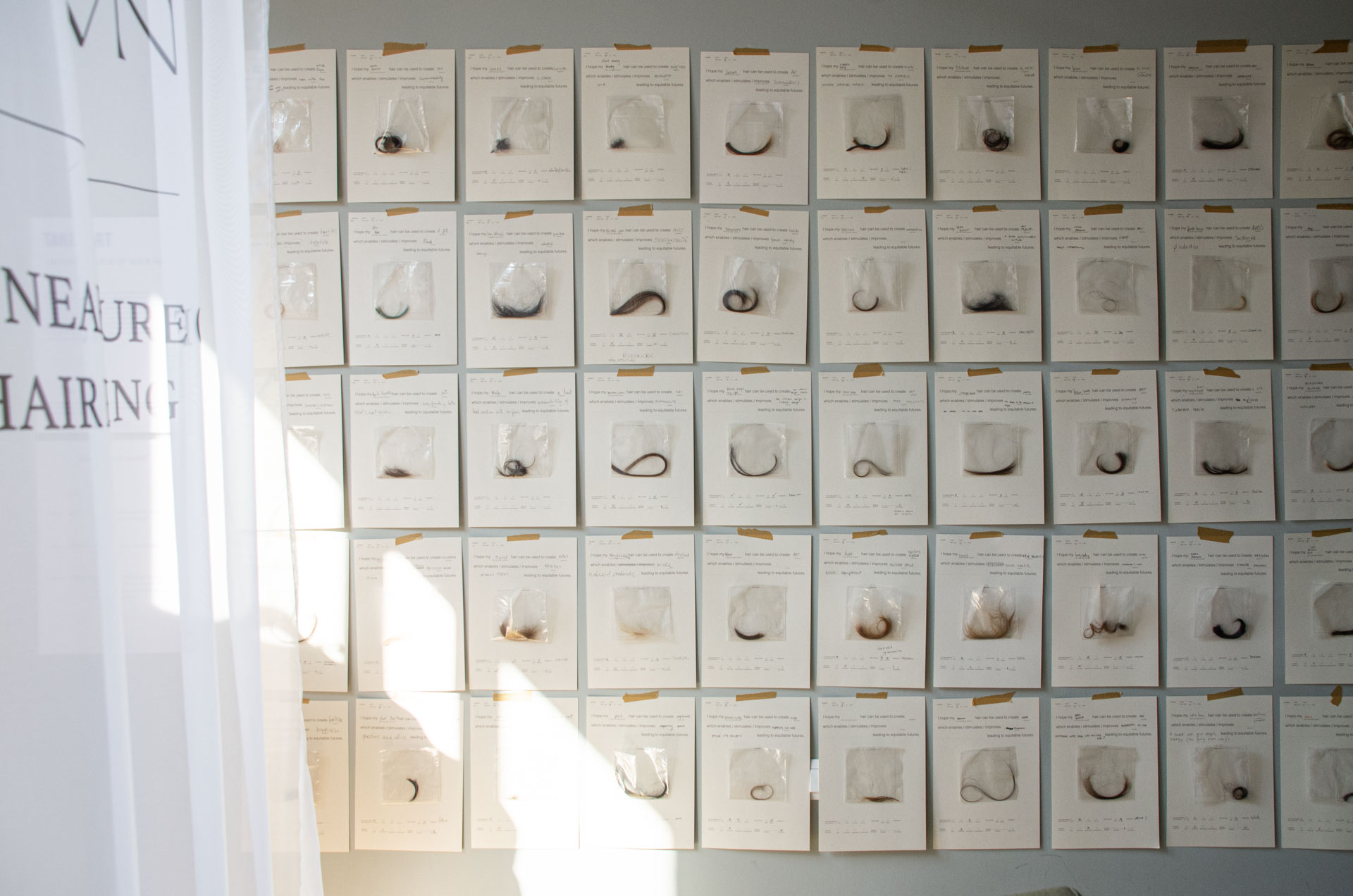
WALL OF HAIR included over 115 hair samples as part of the LOCALLY GROWN exhibition, MDW 2023.
‘I hope my brown curly hair can be used to create shoelaces which enables compostable shoes leading to equitable futures’
‘I hope my brown long hair can be used to create a carpet which stimulates us to stay all together leading to equitable futures’
‘I hope my blue head hair can be used to create a JCB which improves mining leading to equitable futures.
‘I hope my thick hair can be used to create a boat which improves sustainability of boat creation using less plastic leading to equitable futures’
‘I hope my black curly hair can be used to create children toys which stimulates happiness leading to equitable futures.

‘I hope my long brown hair can be used to create a frame which enables the creation of memories and at the same time a new type of manufacturing leading to equitable futures’

In addition, the exhibiton invited people to think about hair as a material from different perspectives through interactive posters and activities, raising questions around hair rituals, meaning of hair, hair ethics and systems of hair.

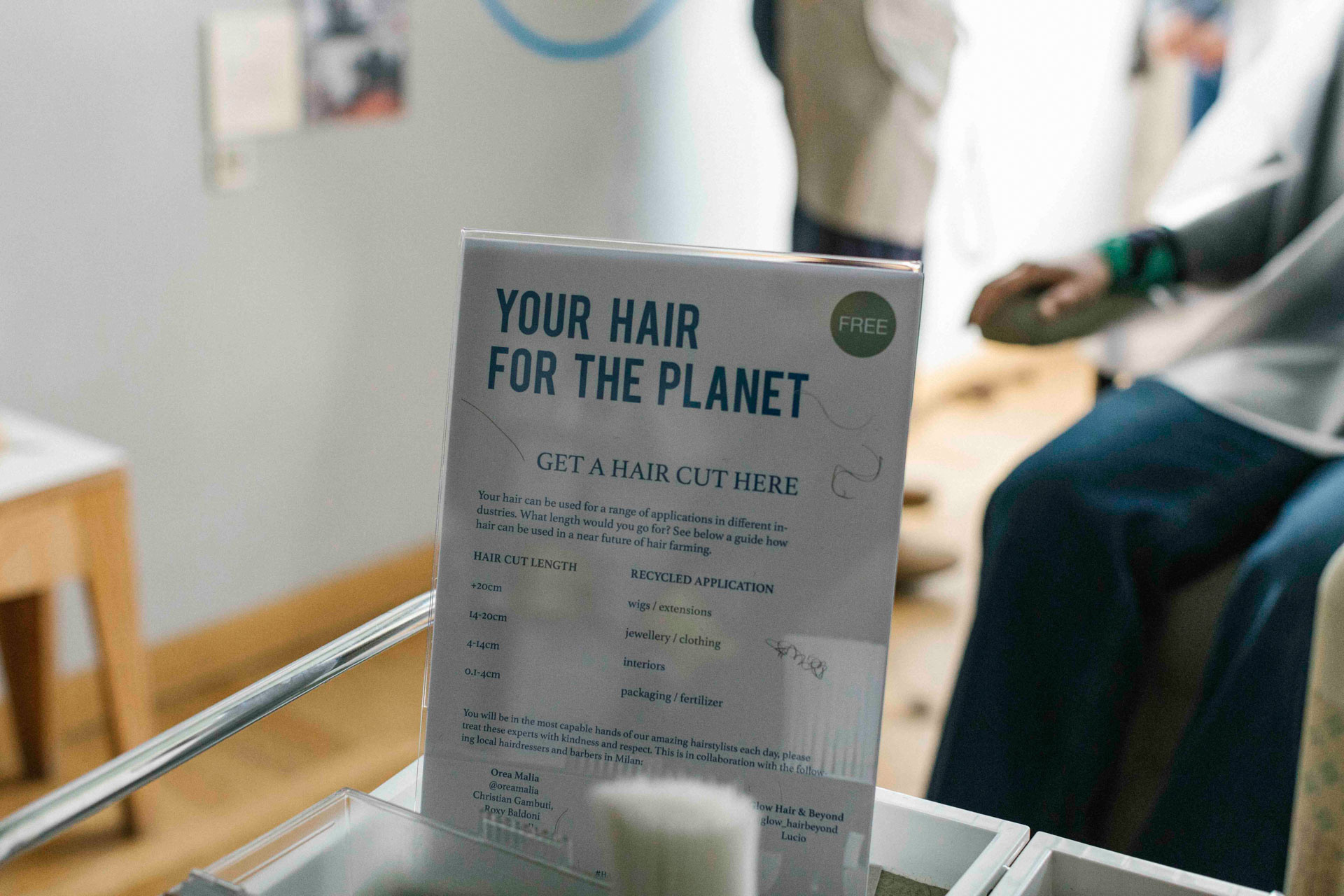


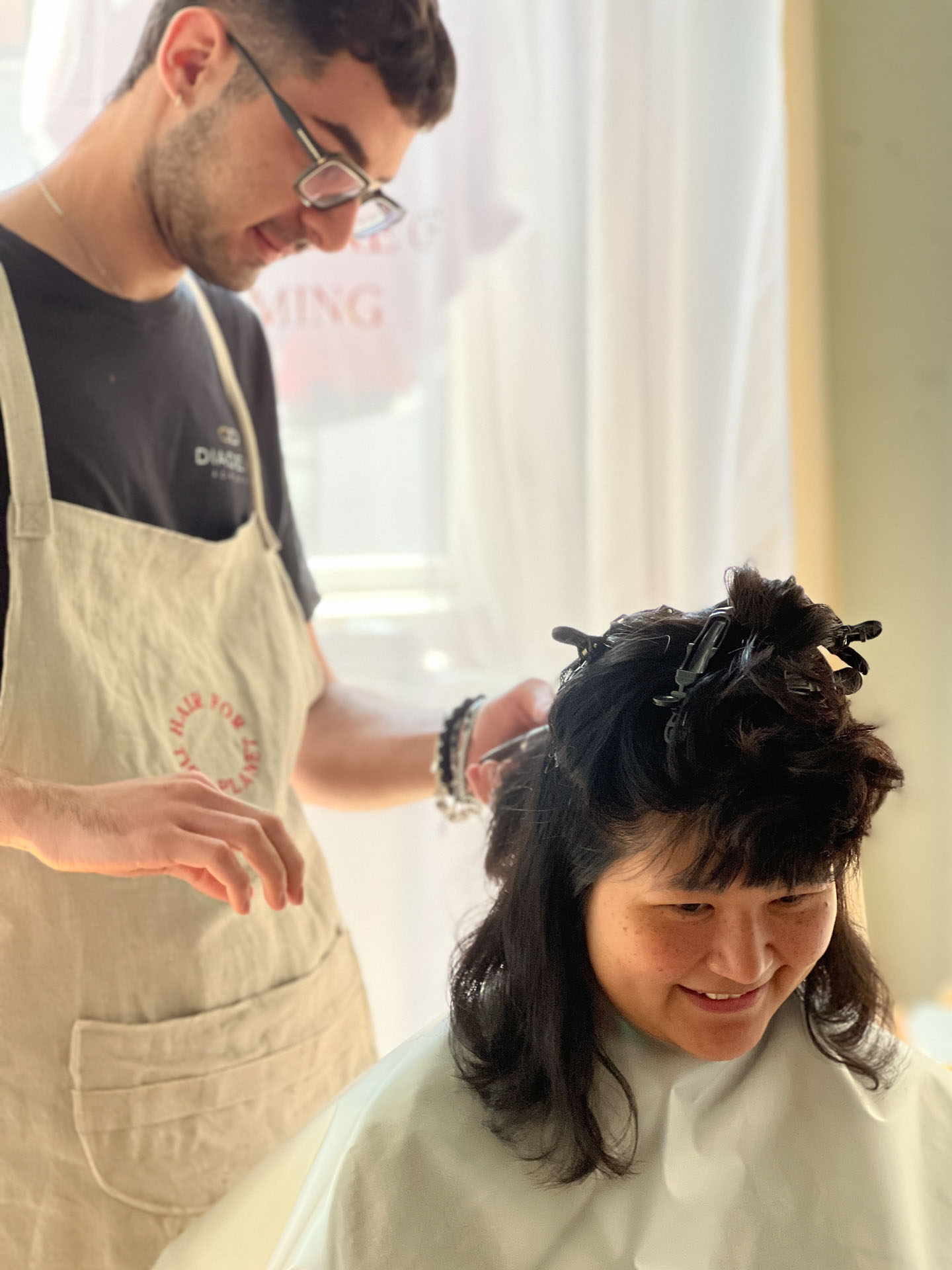





Background LOCALLY GROWN project
LOCALLY GROWN started as a design research project, developed as part of Sanne’s Design Researcher in Residence at the Design Museum in 2022 (Future Observatory programme). Here she worked with a group of hairdressers local to the Design Museum in order to understand, rethink and reimagine the systems and materials of hair. The project findings were disseminated as part of the Restore exhibition with accompanied publication, launched June 2022 at the Design Museum London.



Go to the LOCALLY GROWN project page HERE
Partners

